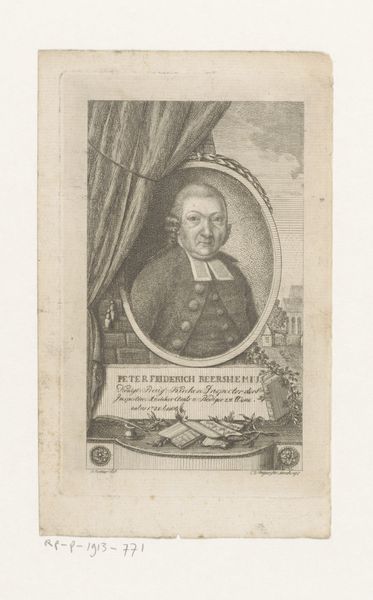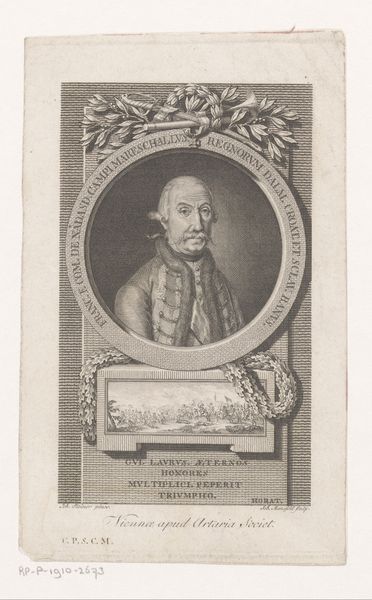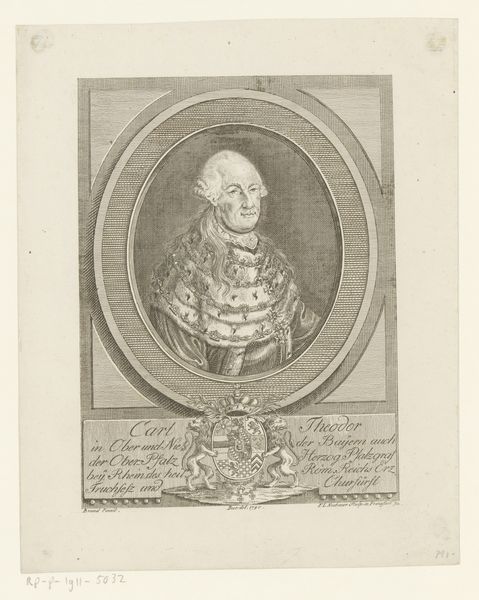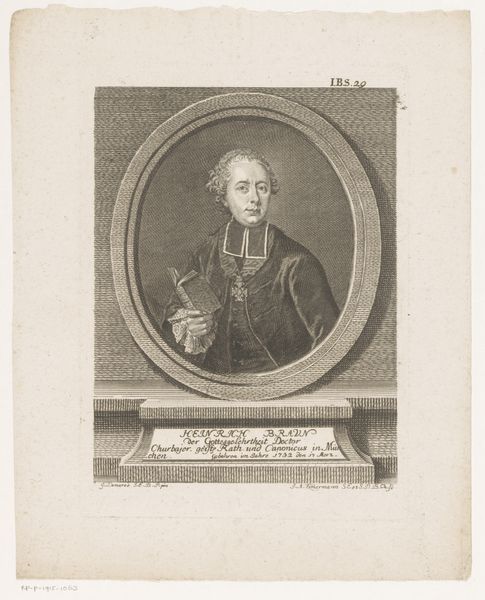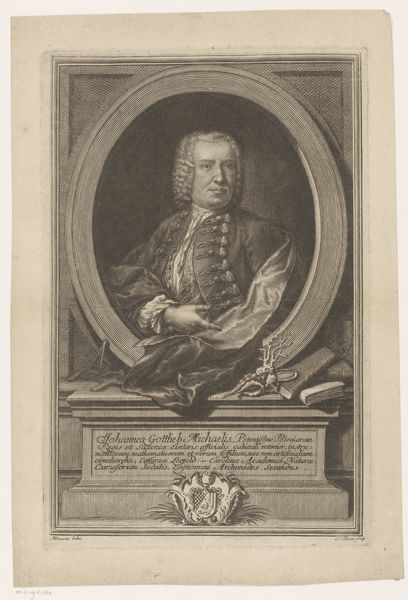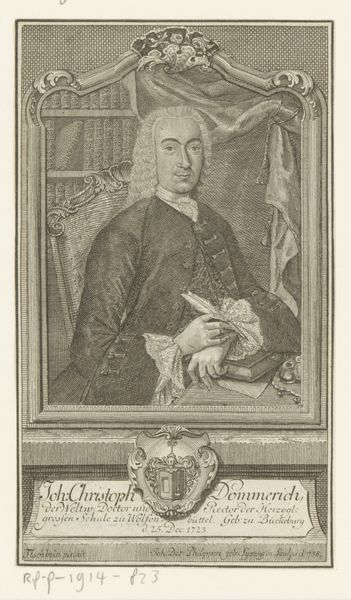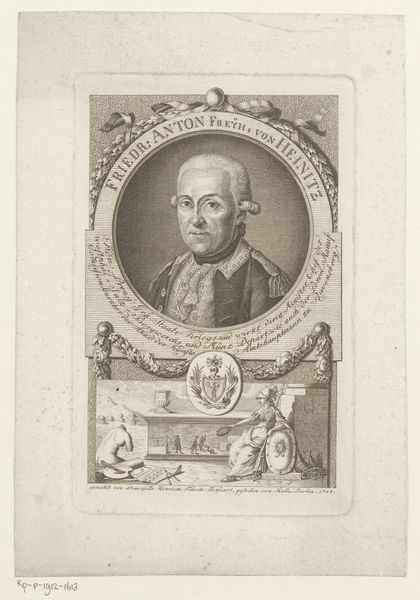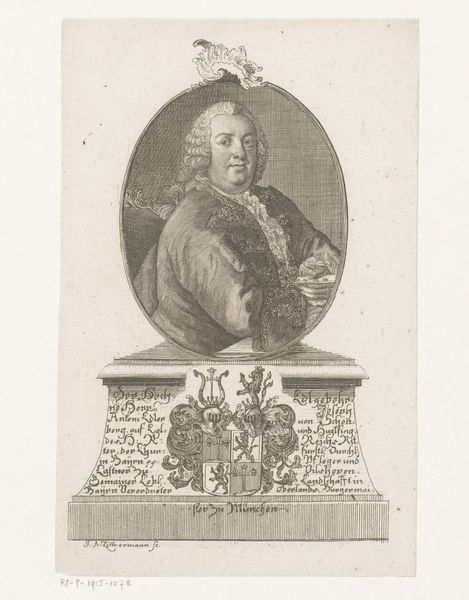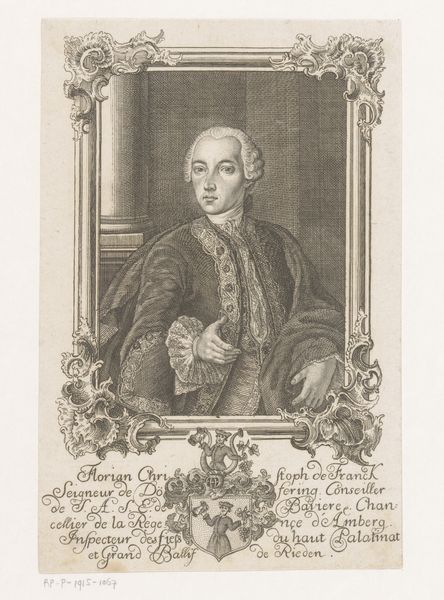
Dimensions: height 166 mm, width 99 mm
Copyright: Rijks Museum: Open Domain
Editor: This is a portrait of Ignazio Paternò Castello, Prince of Biscari, sometime between 1757 and 1831, engraved by Antonio Zacco. It feels so…stately. What strikes you about this piece? Curator: The immediate draw for me is the engraving process itself. Think about the labor involved in producing such a detailed image, the meticulous carving into the metal plate, the inking, and finally the pressing onto paper. This wasn't just about creating a likeness; it was a reproduction process tied to specific social functions. Consider how prints disseminated images and ideas, how they functioned as a form of currency and a signifier of status. Editor: So, you’re saying the value is less in the prince himself and more in how his image was circulated? Curator: Precisely! How does the medium – printmaking – influence our perception of nobility? Engravings like these often served a propagandistic function, standardizing and disseminating specific images of power. Note the accompanying text. This process transformed him from an individual into a manufactured representation of authority and taste, accessible, albeit to a select audience, on a much broader scale. Editor: That’s a good point. It’s easy to get caught up in who he *was* instead of *why* this image exists and who it was for. Did Zacco make many prints? Curator: He did. He was well-regarded in Catania. Knowing more about the system of patronage and the local market for prints at the time would reveal so much more about both the subject and the engraver. Editor: So, thinking about the print *as* an object, as a piece of material culture… I never thought about it that way. Curator: Exactly. Focusing on the material production shifts our focus away from simply admiring the image towards understanding the mechanics of its creation and its role in shaping social and political realities.
Comments
No comments
Be the first to comment and join the conversation on the ultimate creative platform.


